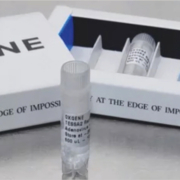OXGENE introduces TESSA technology for robust, reproducible AAV manufacture at scale
OXGENE, a biotechnology company designing and developing scalable gene therapy technologies, has launched its scalable, plasmid-free manufacturing system for AAV. OXGENE’s new TESSA technology addresses industrywide challenges associated with robust and reproducible AAV manufacture at scale. These include high cost of goods and low packaging efficiency. TESSA aims to deliver a paradigm shift in scalable AAV manufacture.
Adeno-associated virus, or AAV, is a popular choice of viral vector to deliver gene therapies to patients, owing to its low immunogenicity, favourable safety profile and the ease with which it transduces numerous cell and tissue types. However, manufacturing systems have not kept pace with biological advances, leaving these therapies costly, difficult to produce at scale, and subject to inherent batch-to-batch variability. This represents a serious challenge to regulators and health authorities when it comes to approving these treatments for clinical use.
OXGENE’s TESSA technology overcomes manufacturing obstacles by taking advantage of AAV’s natural relationship with another virus – the adenovirus. In nature, AAV co-exists with adenovirus, which provides the ‘help’ AAV needs to replicate. However, as well as replicating the AAV, the adenovirus also replicates itself, leading to high levels of adenoviral contamination if this process is translated to an industrial context.
OXGENE has addressed these challenges by manipulating the adenoviral life cycle so that it can still provide high quality help for AAV replication, but is unable to manufacture itself, reducing adenoviral contamination by 99.9999% in a manufacturing run. Integration of the AAV rep and cap genes into the adenoviral vector means that everything required for AAV production, except the AAV genome, can be provided in a single viral vector. Meanwhile, the AAV genome can either be encoded within a second TESSA vector, in a plasmid, or within an AAV particle itself. Using two TESSA vectors improves yields of AAV2 by 40-fold, accompanied by a 2000-fold increase in particle infectivity compared to a standard three-plasmid manufacturing approach.
Once this first AAV seed stock has been produced, co-infecting cells with this AAV alongside another TESSA vector can further amplify the AAV in a simple, reproducible and scalable manner, removing the reliance on expensive and limiting plasmids for AAV manufacture.
OXGENE has so far developed and validated TESSA vectors for AAV2, 5, 6 and 9 and is now taking requests for service projects and product pre-orders to further develop and evaluate this technology.
For more information, visit: www.oxgene.com/TESSA
Supplier: [No title]
Website: https://www.oxgene.com/Gene-Therapy/AAV/Scalable



